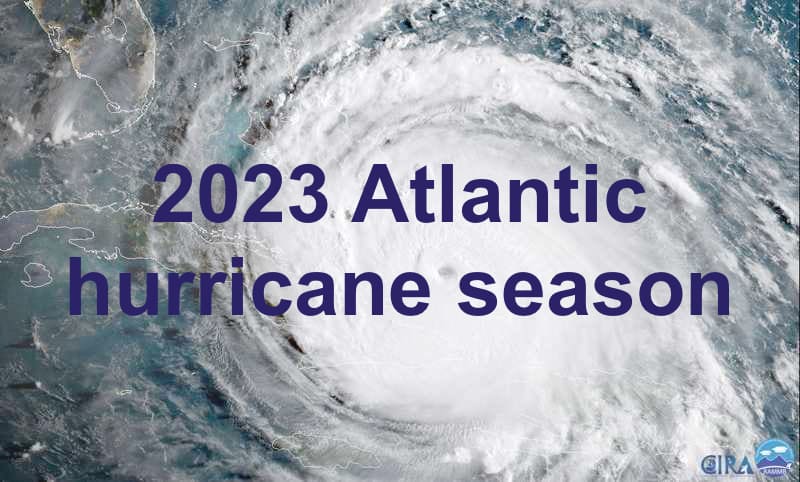Hurricane season: Forecasters place bets on SSTs overriding El Niño

The UK Met Office has pared back its 2023 Atlantic hurricane season forecast slightly in a new update, but while now predicting fewer storms overall, the group has added one to its forecast for major hurricanes, while the Weather Company has raised its seasonal forecast considerably
The UK Met Office has been the outlier pre-season, when its first forecast for 2023 Atlantic tropical storm and hurricane activity predicted a well-above average season.
Back at the end of May, the UK Met Office had forecast 20 named tropical storms (with a 70% chance that the number will be in the range 14 to 26), 11 to become hurricanes (with a 70% chance that the number will be in the range 8 to 14), and 5 intensifying to major hurricane status (with a 70% chance that the number will be in the range 3 to 7) for the 2023 Atlantic season.
Now, in an update for August, the UK Met Office brings down the number of storms and hurricanes, but raises the number of major hurricanes it expects we’ll see.
The new forecast calls for 19 named tropical storms (with a 70% chance that the number will be in the range 14 to 24), with 9 of those expected to become hurricanes (with a 70% chance that the number will be in the range 6 to 12), but now the expectation is that 6 will intensify to major hurricane status (with a 70% chance that the number will be in the range 3 to 9).
Back in May, the UK Met Office called for the seasonal accumulated cyclone energy (ACE) index to reach 222, an indicator of a very active season given the mid-term average is just 123.
At the August update, the ACE forecast has been reduced to 215, with a 70% chance that the index will be in the range 120 to 310, so only a slight increase of this measure of tropical storm energy.
The new forecast reflects a continued assumption at the Met Office, that exceptionally warm sea surface temperatures (SSTs) will counteract El Nino effects and can drive some intense storm activity this year.
It may only take a slight reduction in wind shear and dry air for storms to form, and given the warm temperatures any tropical storms that make it to hurricane status would have a strong chance of reaching major status if conditions remained conducive, given the very warm water they can feed off.
The UK Met Office continues to believe that vertical wind shear through the troposphere over the tropical Atlantic will be lower than previously seen during El Niño events.
At the same time, sea surface temperatures are predicted to remain well above average across the tropical North Atlantic during the entire hurricane season.
“Current El Niño forecasts suggest that the transition from neutral to El Niño conditions is likely to take place over the next few months. However, the speed of transition, its intensity and the time it takes to influence Atlantic hurricane activity will all have a direct bearing on the season ahead with the upper end of the Met Office forecast providing a reasonable worst-case scenario,” the forecaster explained.
Joining the UK Met Office in now predicting a much more active season is the Weather Company, which has increased its forecast to now 20 named storms, 10 hurricanes and 5 major hurricanes.
The Weather Company, working with Atmospheric G2, now feels that the record warmth in ocean temperatures could override the El Nino effects entirely, driving a far more active season than its earlier forecasts had suggested.
Were this forecast to play out correctly, it would make 2023 a record year for hurricane activity during an El Niño, it seems.
The fifth named storm of the season does not typically occur until later in August, so this year is already running ahead of plan.
If these predictions for more activity, due to the record warm SSTs in the Atlantic, prove true, the insurance, reinsurance and insurance-linked securities (ILS) industry could have a very busy few months ahead.
Although, as ever, it is the direction storms track in and where any landfalls occur that drives the economic damage and losses for reinsurance and ILS interests.
Adding in these latest forecast updates to our Artemis average, across the forecasters we track, lifts it to now 16 named storms (up 1), 8 hurricanes (flat) and 3 major hurricanes (flat), remaining slightly above the near-term average, but still creeping slowly higher.
Track the 2023 Atlantic tropical storm and hurricane season on our dedicated page and we’ll update you as new information emerges.






